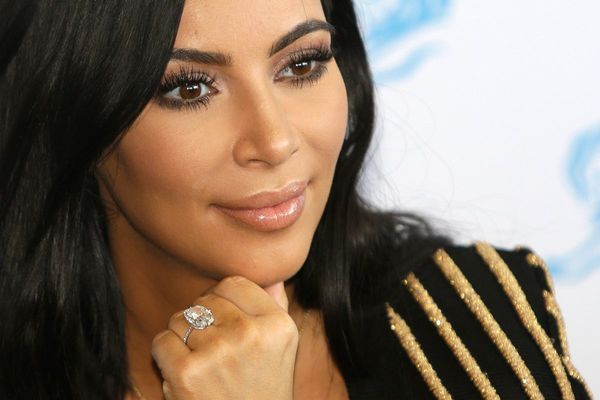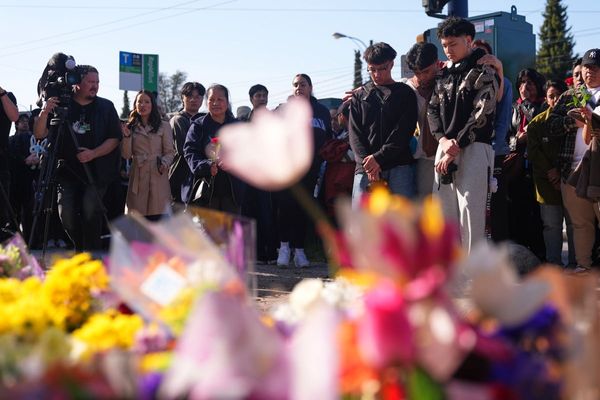Kwame Nkrumah Memorial Park lies at the centre of Ghana’s capital, Accra. Recently renovated, it is dedicated to the memory of Kwame Nkrumah, the leader of Ghana’s independence struggle and its first president. Marking the spot of his final resting place at the park is a massive statue.
The statue has been continuously contested since its original commission in 1956 and its unveiling at the first anniversary of independence in 1958. As a social anthropologist who has researched and written about Kwame Nkrumah themed monuments, I have explored the contradiction that generally characterises monuments: built as lasting memories, they remain embedded in social and political conflict.
Nkrumah is heralded as one of the most influential African political leaders of the modern era. His vision of a liberated and united African continent influenced politics on the continent in the 1950s and 1960s. But that’s only one view of a man who was deposed in a coup in 1966 and died in exile in 1972.
In Ghana, there was vociferous criticism of “personality cult” and “hero worship”. Alongside presentations of him as the country’s “redeemer” were descriptions of him as a “dictator”.
The idolisation of Nkrumah began even before the country became independent. It had all the hallmarks of a new nation state trying to establish a charismatic national “founder” to stabilise its creation. But, as I have shown, Nkrumah’s story shows both the limits and dangers of doing this.
These debates have been matched by unfolding dramas around various efforts to commemorate him – before and after his death. Attitudes have shifted from straightforward veneration to confrontation and destruction and, finally, to more subtle forms of remembrance.
The birth of a monument
With thoughts of Ghana soon celebrating 25 years of independence, then military ruler Ignatius Kutu Acheampong intended to publicly honour the memory of Nkrumah. The deposed leader had passed away in 1972, in exile. After his overthrow, several of his statues and images had been destroyed by the military government. His memory was taboo.
Acheampong discussed the possibility of creating a mausoleum, adorned with an imposing new statue, on the grounds where the ex-president had declared independence. The statue was commissioned in Italy but before it could be erected the Acheampong government was toppled by Flight Lieutenant Jerry J. Rawlings in 1979.
In addition, the continued economic crisis militated against any large-scale investment in the monumental landscape.
The memorial project was finally realised in 1992 based on the design of Ghanaian architect Don Arthur. The heart of the memorial is the mausoleum, surrounded by water basins, with fountains and figures of Asante elephant-horn blowers that traditionally accompany royal processions.
The mausoleum stands in a landscaped park that is successively greened by commemorative trees planted by important international visitors. It is complemented by a museum that exhibits a collection of Nkrumah memorabilia. These include the famous smock he wore to declare independence, his desk at the seat of government and numerous photographs.
The mausoleum itself, made of Italian marble, evokes a gigantic tree stump, but also draws on the imagery of Egyptian pyramids, the Taj Mahal and the Eiffel Tower. The whole ensemble celebrates Nkrumah as a kind of chief. The shining large bronze statue erected in front of the mausoleum shows Nkrumah clad in royal kente cloth, not the humble smock of the original sculpture.
Opponents of Rawlings regarded the mausoleum project as an attempt to exploit the growing nostalgia for Nkrumah in his electoral campaign and to style himself and his party as worthy heirs of Nkrumah’s ideas. Another major motivation behind the project was to show the world that Ghanaians, after many years of neglect, respected Nkrumah as a great African leader. This was actually the first time since his overthrow that Nkrumah was publicly commemorated with such splendour. The memorial park conferred on Nkrumah an indisputable place in the national narrative.
This status, however, did not mean that his political legacy was now without contest. When the anti-Nkrumah New Patriotic Party won the elections in 2000, they, unlike the 1966 coup-makers (who removed all images and monuments of Nkrumah), made no attempts to destroy the Nkrumah monument. However, the new government found other ways to correct, or at least complement, Nkrumah-centred nationalist narratives.
For instance, in the course of preparing for the golden jubilee of Ghana’s independence in 2007, the John Kufuor administration created a series of monuments that commemorate the political heroes of his party, the New Patriotic Party. Most prominently, J.B. Danquah, Nkrumah’s most noted political opponent, was honoured by a renovated sculpture at a busy traffic roundabout in the capital.
This proliferation of historical monuments can be read as an attempt to neutralise the commemoration of Nkrumah. This was done not by eliminating existing statues of him, but rather by reducing Nkrumah’s status to being only one of several national founders.
Strong memories remain
For the masses of Ghanaian students and foreign tourists who come to the park, the statue of a triumphant Nkrumah has become the dominant icon of the national hero and of Ghana’s independence. It has been reproduced over and over again on thousands of private photographs, and is marketed on postcards, posters, calendars, T-shirts, bags, towels, tea cups and similar souvenirs.
However, there are still limits to the depoliticisation of Nkrumah’s memory. Heated debates over whether Nkrumah was a “democrat” or a “despot” flare up periodically. National heroes, as the case of Nkrumah shows, can divide people just as much as they can unite.
Developing the mausoleum into an attractive tourist site, as happened in the renovation and re-inauguration of the park in 2023, adds another intriguing twist to the long history of the commemoration of Kwame Nkrumah – another attempt at depoliticising and nationalising memory.
Carola Lentz does not work for, consult, own shares in or receive funding from any company or organization that would benefit from this article, and has disclosed no relevant affiliations beyond their academic appointment.
This article was originally published on The Conversation. Read the original article.







